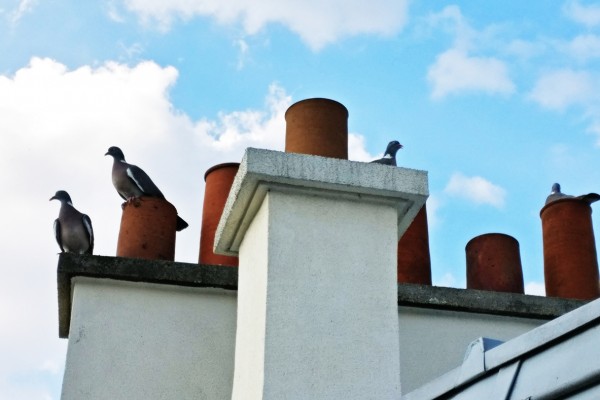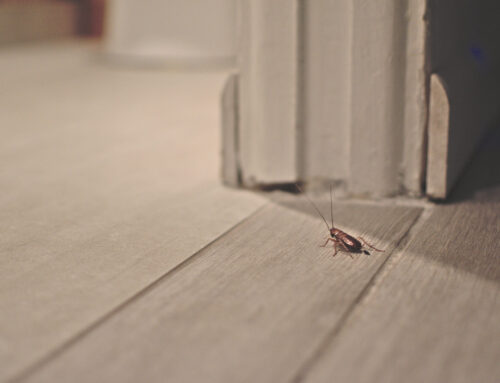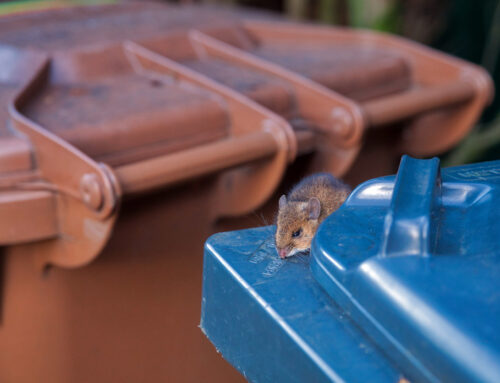Best Methods to Get Rid of Birds Around Your House
Birds can be annoying pests. Here is a quick list of what does and doesn’t work when dealing with birds in and around your home and what your best choices are for bird control.
DETERRENTS
When it comes to bird control, you’re looking to displace, not eliminate, them. This is why deterrents are the most popular option when it comes to bird pest control.
Physical Deterrents
The easiest way to stop birds from nesting or landing on your home is to make it impossible for them to land. If there’s nowhere for them to be, they can’t be a pest. The most common physical deterrents are steel or plastic spike systems or netting.
Spike systems can be very effective, but sharp bird spikes come with the risk of piercing and impaling birds. It is possible to blunt the spikes, but in windy conditions, birds still can be impaled. This can be a delicate balance because if you blunt the spike systems too much they are no longer effective.
Netting, or fencing, focus on not allowing birds into a location. The most common issue with netting is improper installation. Leaving a small gap or hole in your netting, or not tightly securing it at all points can lead to birds still entering into an unwelcome spot.
Visual Deterrents
Visual deterrents are also known as scare devices. This can include things like reflective tapes, balloons, kites, lightweight spinning disks propelled by the wind, or garden orbs. The primary goal of visual deterrents is to try to fool birds into thinking these inanimate objects are predators and the area is dangerous to be in.
Sonic Deterrents
Used mostly in wide large open areas, these devices create audible sounds to scare away pests. Typically they include a mix of predator and distress calls. Since most birds are assumed to have a hearing range similar to human hearing, these produce noises that can be heard from humans, so they are not often used in populated areas.
Multi-Sensory Deterrents
These devices use multiple deterrents at once. They use a visual deterrent of a small statue in the shape of an owl or other bird of prey paired with a sonic deterrent built into the statue. Combined together multi-sensory deterrents are more effective than single form deterrents.
WHAT DOESN’T WORK
You might insult someone by calling them a bird brain, but birds are smarter than you think. For most deterrents and repellants, there is a lifespan to them. Most species will adapt and ignore sonic deterrents within months of initial contact.
COMMON LOCATIONS
Birds like to nest in places with an advantageous viewpoint or places that are protected from the elements. Some smaller birds like sparrows, will even nest in gutters and drain pipes. A common location for birds to nest is in the attic or vents.
If you have birds in your home, don’t make the mistake of using lethal action to remove them. While this might be effective, you might also be breaking the law. There is a wide variety of protected bird species that are illegal to kill or harm, even if they are pests in your home, or on your property.
If you have a bird infestation in your home’s attic, roofing, or gutter system, consult a professional removal service. They will help make sure you follow any local bird protection laws and provide safe and effective removal. This will cost you anywhere from $100 to $300 depending on your situation. If you are looking for the company to also help install preventive materials like netting or spikes, that can run additional costs as high as $1,000.
MOST DESTRUCTIVE BIRDS TO YOUR HOME
There are some birds that are more dangerous and destructive to your home than others. Keep an eye out for these pests as they can cause more damage than your average bird.
- Pigeons – There’s a reason they’re called rats with wings. They cause damage with their droppings that are high in acid and can eat away plastic, wood, metals, vinyl, and even stone. It can even eat into tar-based roofing, which can lead to leaks and water damage. Their nests also can block and damage rain gutters which can cause an even higher risk for water damage.
- Woodpeckers – With their sharp beaks and persistent pecking, woodpeckers can turn any stable wood into swiss cheese. No surface is safe from a woodpecker and they are even known to peck through metal sheeting. They can easily damage or even destroy essential parts of your home like eaves, window frames, gutters, downspouts, chimney caps, TV, and rooftop vents.
- Geese – If your property is close to a lake, pond, or other body of water, geese are a threat to your home. Manicured lawns are prime targets for them to digest grass and leave behind droppings that can contain E.coli, salmonella, campylobacter, and cryptosporidium. On average, one goose will produce about ½ a pound of droppings every day. It doesn’t take long for a flock of geese to destroy a lawn or home.
PEST SOLUTIONS BY PROFESSIONALS
When it comes to pests around your home, you need to make sure once they’re gone, they stay gone. American Pest Control’s bird control service is your best option. We can take care of any pests in your home, including your bird infestation.
We provide the most efficient bird removals as part of our quarterly pest control service. Contact us to get in touch with one of the best pest control companies in Illinois and find out how we can help you today.




![Most Common Ants in Illinois [And How to Get Rid of Them]](https://callamericanpest.com/wp-content/uploads/2022/08/iStock-1218994486-min-scaled-500x383.jpg)

